HIS R7 250 iCooler Boost Clock 2GB GDDR5 PCI-E HDMI/SLDVI-D/VGA
HIS R7 250 iCooler 2GB features Boost Clock is faster, iCooler is Quieter, user-friendly iTurbo.
iCooler is Quiet
The card is equipped with iCooler, making it extremely quiet and noise level is less than 28dB. You feel the quietness when viewing photos, browsing webs, checking your email and playing movies in UVD mode.
Boost Clock is Faster
The card has the latest Boost Clock technology, providing extra performance for the most demanding games and applications!
High Quality Components
HIS uses only the finest materials and the most advanced techniques to build our cards, making them one of the most stable and durable product in the industry. The card is engineered with the highest standard of safety, preventing them any potential damages.
CrossFireX Ready!
The card’s is supports software crossfire, ready for CrossFire & strengthened performance without the need of a crossfire bridge!
New Technology, New Experiences
GCN
With AMD 2nd generation GCN technology, the card optimizes DirectX® 12 gaming performance automatically up to 2. 5 times faster! It also offers up to 4.5x compute performance and up to 95% lower GPU Idle Power Consumption!
Apps Faster & Smoother!
The card enables a “quality graphics” experience on everyday applications, giving huge performance boosts on image processing, file compression, media converter apps, and a lot more!
• Adobe Photoshop CS6
• Corel Winzip 16.5
• Musemage
• Handbrake
• MotionDSP Vreveal
• GIMP
• Cyberlink Power Director
• ArcSoft Media Converter
PCI-e 3.0 Support
Armed with the latest PCI-e 3.0 bus design maximizes performance by delivering double bandwidth per lane of PCI-e 2.x. Paired the card with the latest platforms and get the ultimate performance!
See More, Enjoy More!
The card supports 30” LCD monitor and any large size TV up to 80″ feature with 16:9 ratio in amazing 4096 by 2160 resolution. Up-scaling your computer into a multimedia center with the biggest display!
Enjoy HD Beauty
With Full HD 1080p support, the card delivers high quality 1920X1080 graphics, enabling seamless full-screen video playback.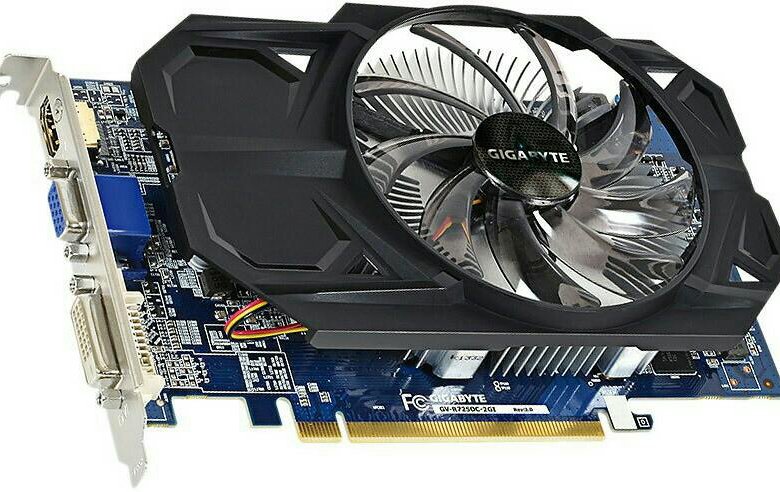 See HD, hear HD and feel HD — Enjoy the beautiful graphics now with the card!
See HD, hear HD and feel HD — Enjoy the beautiful graphics now with the card!
Enjoy Copy Protected Movies
The card is HDCP complaint, enabling users to play copy-protected content, such as commercial DVD movies.
Enjoy True to Life Graphics
ULTRA HD videos have resolution four times that of current HD videos, meaning images too clear that may deceive your eyes! With the card, you are set for getting the movie theater experience to your home. You may be able to watch a video shooting the Eiffel tower and zoom it in to see your friend’s face clearly from the top! Get your eyes impressed and enjoy mind-blowing graphics with extreme clarity, depth and texture!
More Graphics, Less Power
Low Power Consumption
You do not have to worry about having the proper power connection from you power supply. No external power is needed and power is supplied through the card slot. The card requires only 400W power supply. Just plug the card in and enjoy the superb graphics experiences!
Optimized Power & Performance
The new architecture of the card gets more usable processing power for your money, enabling better frame rates in the latest games at high resolutions.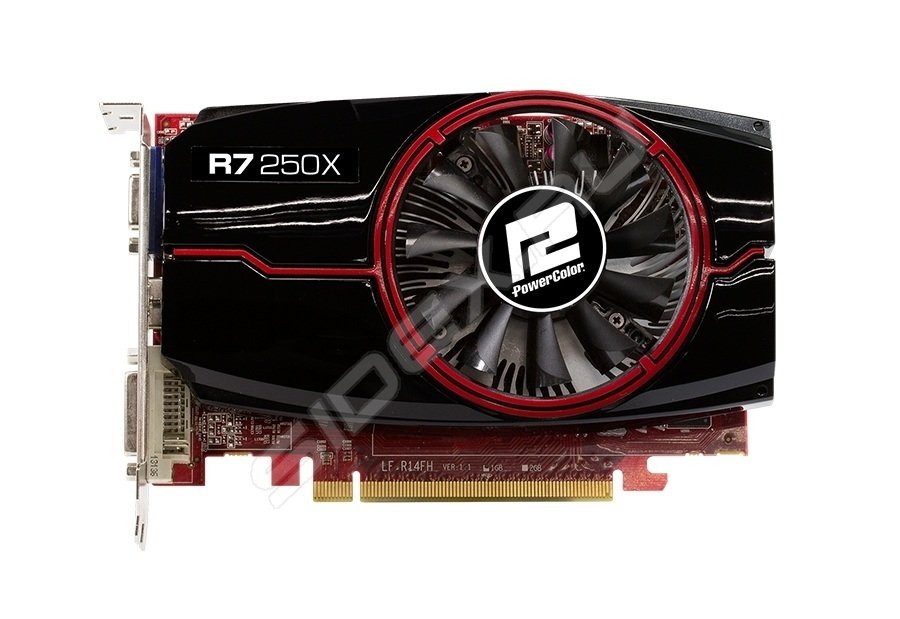 In addition, with AMD PowerPlay™ & AMD PowerTune technologies, you can optimize the balance between performance and power consumption of your system by adjusting the engine clock during runtime of the card. Manage the power and keep your wallet loaded!
In addition, with AMD PowerPlay™ & AMD PowerTune technologies, you can optimize the balance between performance and power consumption of your system by adjusting the engine clock during runtime of the card. Manage the power and keep your wallet loaded!
HIS PRODUCTS ADVANTAGE
- HIS delivers Faster, Cooler, Quieter plus the best quality product!
- Professional customer service and technical support
What’s in the box
- HIS Graphics Card
- Install CD with Multilingual User Guide
- Quick Installation Guide
| Model Name | HIS R7 250 iCooler Boost Clock 2GB GDDR5 PCI-E HDMI/SLDVI-D/VGA |
| Chipset | AMD Radeon R7 250 |
| Memory Size | 2048 MB |
| Memory Type | GDDR5 |
| Core Clock | 925 MHz |
| Memory Clock | Up to 4. 5 Gbps 5 Gbps |
| Memory Interface | 128 bit |
| Power Supply Requirement |
400 Watt (or greater) power supply recommended 500 Watt (or greater) for AMD CrossFire™ technology in dual mode |
| Max. Resolution (per Display) |
HDMI — 4096×2160 VGA — 2048×1536 |
| Interface | PCI Express 3.0 x8 |
| Outputs | HDMI + SLDVI-D + VGA |
System Requirements
- PCI Express® based PC is required with one X8 lane graphics slot available on the motherboard
- 400 Watt (or greater) power supply recommended
500 Watt (or greater) for AMD CrossFire™ technology in dual mode - The operation of AMD CrossFire™ technology in dual mode requires a second AMD Radeon™ R7 250 graphics card and an AMD CrossFire™ Ready motherboard. Note that AMD CrossFire™ technology greater than dual mode is not supported with AMD Radeon™ R7 250 graphics products
- Minimum 1GB of system memory
- Installation software requires CD-ROM drive
- DVD playback requires DVD drive
- Blu-ray™ playback requires Blu-ray drive
- Windows® 7, Windows 8 or Windows 8.
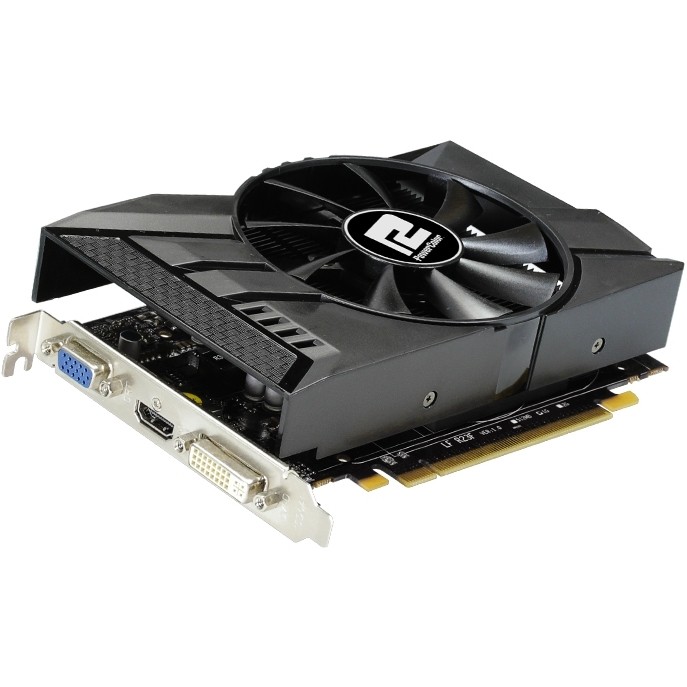 1 operating system.
1 operating system.
Post your comment
AMD Radeon R7 250 vs ATI Radeon HD 5670: What is the difference?
29points
AMD Radeon R7 250
26points
ATI Radeon HD 5670
Comparison winner
vs
54 facts in comparison
AMD Radeon R7 250
ATI Radeon HD 5670
Why is AMD Radeon R7 250 better than ATI Radeon HD 5670?
- 225MHz faster GPU clock speed?
1000MHzvs775MHz - 0.15 TFLOPS higher floating-point performance?
0.77 TFLOPSvs0.62 TFLOPS - 1.8 GPixel/s higher pixel rate?
8 GPixel/svs6.2 GPixel/s - 150MHz faster memory clock speed?
1150MHzvs1000MHz - 600MHz higher effective memory clock speed?
4600MHzvs4000MHz - 8.5 GTexels/s higher texture rate?
24 GTexels/svs15.5 GTexels/s - 9.
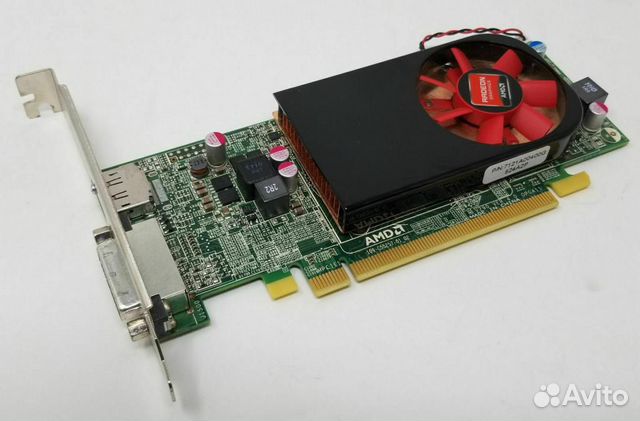 6GB/s more memory bandwidth?
6GB/s more memory bandwidth?
73.6GB/svs64GB/s - 413million more transistors?
1040 millionvs627 million
Why is ATI Radeon HD 5670 better than AMD Radeon R7 250?
- Supports multi-display technology?
- Has Double Precision Floating Point (DPFP)?
Which are the most popular comparisons?
AMD Radeon R7 250
vs
AMD Radeon RX 550
ATI Radeon HD 5670
vs
AMD Radeon RX 550
AMD Radeon R7 250
vs
Nvidia GeForce GTX 750 Ti
ATI Radeon HD 5670
vs
AMD Radeon HD 6570
AMD Radeon R7 250
vs
Nvidia GeForce GT 1030 DDR4
ATI Radeon HD 5670
vs
Nvidia GeForce GTX 1050
AMD Radeon R7 250
vs
AMD Radeon HD 7750
ATI Radeon HD 5670
vs
Nvidia GeForce GTX 1050 2GB
AMD Radeon R7 250
vs
MSI GeForce GT 710 2GB
ATI Radeon HD 5670
vs
Nvidia Quadro RTX 6000
AMD Radeon R7 250
vs
Nvidia GeForce GTX 750
ATI Radeon HD 5670
vs
MSI GeForce GT 640 4GB
AMD Radeon R7 250
vs
AMD Radeon Vega 8
ATI Radeon HD 5670
vs
Zotac GeForce GT 640 2GB
AMD Radeon R7 250
vs
AMD Radeon R7 250X
ATI Radeon HD 5670
vs
Gigabyte GeForce GT 630
AMD Radeon R7 250
vs
AMD Radeon RX 580
ATI Radeon HD 5670
vs
Nvidia GeForce GTX 550 Ti
AMD Radeon R7 250
vs
Nvidia GeForce GTX 1050
ATI Radeon HD 5670
vs
AMD Radeon R5
Price comparison
User reviews
Performance
GPU clock speed
1000MHz
775MHz
The graphics processing unit (GPU) has a higher clock speed.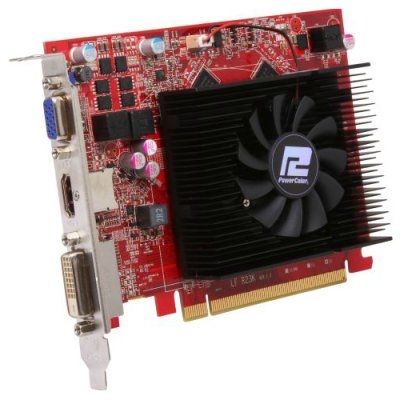
GPU turbo
1050MHz
Unknown. Help us by suggesting a value. (ATI Radeon HD 5670)
When the GPU is running below its limitations, it can boost to a higher clock speed in order to give increased performance.
pixel rate
8 GPixel/s
6.2 GPixel/s
The number of pixels that can be rendered to the screen every second.
floating-point performance
0.77 TFLOPS
0.62 TFLOPS
Floating-point performance is a measurement of the raw processing power of the GPU.
texture rate
24 GTexels/s
15.5 GTexels/s
The number of textured pixels that can be rendered to the screen every second.
GPU memory speed
1150MHz
1000MHz
The memory clock speed is one aspect that determines the memory bandwidth.
shading units
Shading units (or stream processors) are small processors within the graphics card that are responsible for processing different aspects of the image.
texture mapping units (TMUs)
TMUs take textures and map them to the geometry of a 3D scene. More TMUs will typically mean that texture information is processed faster.
render output units (ROPs)
The ROPs are responsible for some of the final steps of the rendering process, writing the final pixel data to memory and carrying out other tasks such as anti-aliasing to improve the look of graphics.
Memory
effective memory speed
4600MHz
4000MHz
The effective memory clock speed is calculated from the size and data rate of the memory. Higher clock speeds can give increased performance in games and other apps.
maximum memory bandwidth
73.6GB/s
64GB/s
This is the maximum rate that data can be read from or stored into memory.
VRAM (video RAM) is the dedicated memory of a graphics card. More VRAM generally allows you to run games at higher settings, especially for things like texture resolution.
memory bus width
128bit
128bit
A wider bus width means that it can carry more data per cycle. It is an important factor of memory performance, and therefore the general performance of the graphics card.
version of GDDR memory
Newer versions of GDDR memory offer improvements such as higher transfer rates that give increased performance.
Supports ECC memory
✖AMD Radeon R7 250
✖ATI Radeon HD 5670
Error-correcting code memory can detect and correct data corruption. It is used when is it essential to avoid corruption, such as scientific computing or when running a server.
Features
DirectX version
DirectX is used in games, with newer versions supporting better graphics.
OpenGL version
OpenGL is used in games, with newer versions supporting better graphics.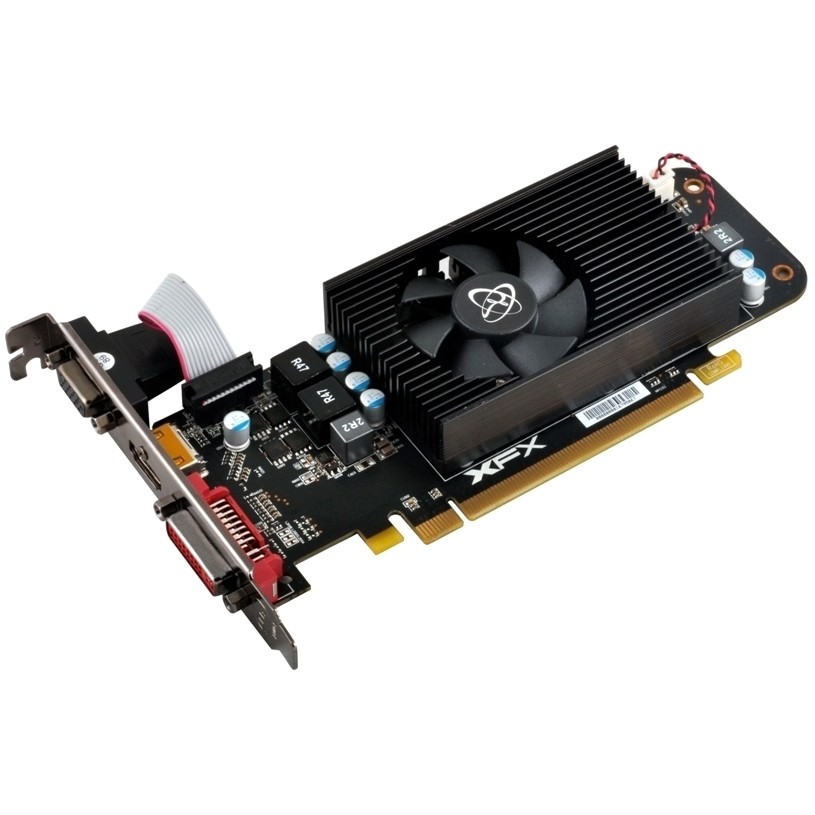
OpenCL version
Some apps use OpenCL to apply the power of the graphics processing unit (GPU) for non-graphical computing. Newer versions introduce more functionality and better performance.
Supports multi-display technology
✖AMD Radeon R7 250
✔ATI Radeon HD 5670
The graphics card supports multi-display technology. This allows you to configure multiple monitors in order to create a more immersive gaming experience, such as having a wider field of view.
load GPU temperature
Unknown. Help us by suggesting a value. (AMD Radeon R7 250)
Unknown. Help us by suggesting a value. (ATI Radeon HD 5670)
A lower load temperature means that the card produces less heat and its cooling system performs better.
supports ray tracing
✖AMD Radeon R7 250
✖ATI Radeon HD 5670
Ray tracing is an advanced light rendering technique that provides more realistic lighting, shadows, and reflections in games.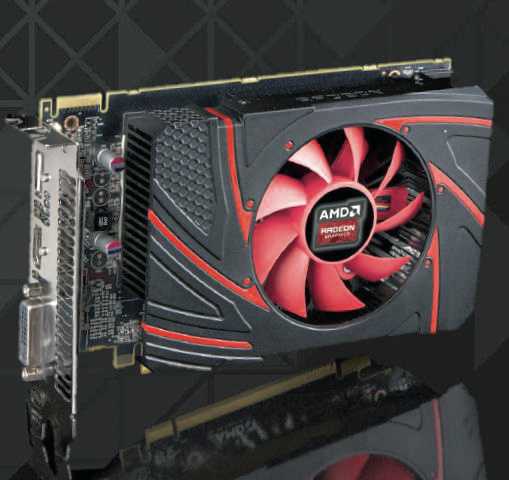
Supports 3D
✔AMD Radeon R7 250
✔ATI Radeon HD 5670
Allows you to view in 3D (if you have a 3D display and glasses).
supports DLSS
✖AMD Radeon R7 250
✖ATI Radeon HD 5670
DLSS (Deep Learning Super Sampling) is an upscaling technology powered by AI. It allows the graphics card to render games at a lower resolution and upscale them to a higher resolution with near-native visual quality and increased performance. DLSS is only available on select games.
PassMark (G3D) result
Unknown. Help us by suggesting a value. (AMD Radeon R7 250)
This benchmark measures the graphics performance of a video card. Source: PassMark.
Ports
has an HDMI output
✔AMD Radeon R7 250
✔ATI Radeon HD 5670
Devices with a HDMI or mini HDMI port can transfer high definition video and audio to a display.
